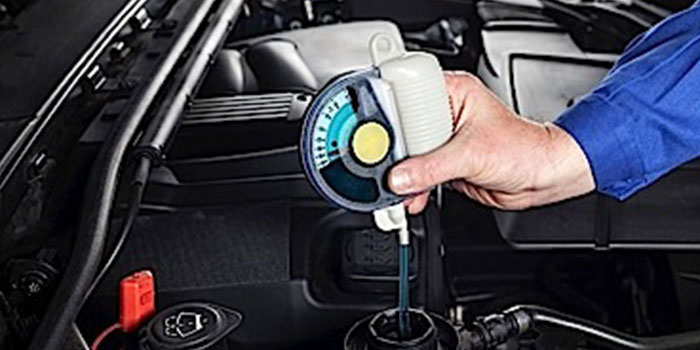
In the past, there were two coolants: summer and winter. During the summer, radiators were filled with water and maybe a bottle of chemicals to prevent corrosion. When winter was around the corner, drivers would install antifreeze made of glycol and other substances. Some people even used honey to lower the coolant freezing point.
In those days, it was common knowledge amongst drivers that their car had to be winterized. And, it was a common occurrence during summer that an engine would puke the entire contents of the cooling system as a result of a stuck thermostat, thrown belt or failed gasket. So, using an expensive antifreeze in the summer was not really an option. But, the two-coolant system was not kind to the environment. Most of the coolant was washed down the drain and not collected.
On modern vehicles, overheating is a rare occurrence, as factory-fill coolants can last more than 100,000 miles. But, over time, they can lose their ability to protect the engine against gasket damage and corrosion.
Coolant at 100,000 miles may look the same as coolant with zero miles. The real difference between good and bad coolant can’t be seen with the naked eye; it is in the chemistry. If you do determine that coolant is contaminated, the system has been damaged and new coolant will not help.
Coolant contains additives called buffers that keep it at a neutral pH. When these chemicals become depleted, the pH can’t be controlled. This is not a gradual process. The pH rises dramatically in a short period of time the moment the buffers are fully depleted. This is when replacing the coolant at the recommended interval is critical.
Coolant has two specifications that can be used to justify replacement — the condition of the additive package and the freezing point.
Additive package: This is the secret sauce for a coolant. Its main function is to control corrosion. Other components of the additive help with heat transfer and reduce cavitation. Some additive packages use seal conditioners to extend the life of nitrile gaskets.
Freezing point: This measurement determines the overall specific gravity of the coolant, which has a direct relationship to the coolant/water mixture. This test can help spot coolant that has been compromised by the owner topping off with water. This measurement works well on systems that do not have pressurized reservoirs.

The strength or freezing point of coolant can be measured with a simple hydrometer. This device uses a calibrated float or plastic balls (not as accurate) to show the specific gravity of the coolant. This, in turn, shows how much freezing/boiling protection the coolant offers. You must remember to compensate for temperature because the specific gravity (density) of the coolant is lower when the coolant is hot.
The more professional tool for this purpose is an optical refractometer because it is very accurate and automatically compensates for temperature. A refractometer can cost up to $300 or more because of the precision optics in its lens. Ethylene glycol (EG) and polyethylene glycol (PG) antifreeze have slightly different densities, so you have to use a hydrometer or refractometer with the appropriate scale (or one with a dual scale) for accurate test results.
Color-coded chemical test strips that are dipped into the coolant can be used to quickly and easily reveal the condition of the coolant. These strips of coated capillary paper react to the presence of certain dissolved minerals in the coolant and change color to give a good, marginal or bad indication of the coolant’s condition. Some test strips also show the concentration of antifreeze in the coolant.
The added benefit of test strips is that the results can be shared with the owner by attaching the used strip to the inspection form.
Selling any fluid service is difficult these days. But, if you document and educate customers on the importance of coolant, it becomes more than just an “add on” service.
Courtesy Underhood Service.














